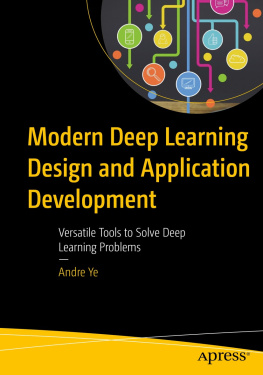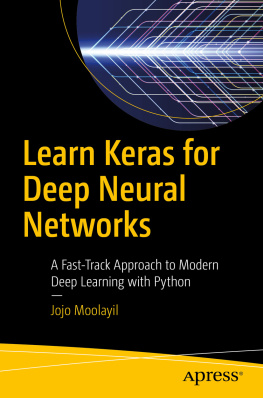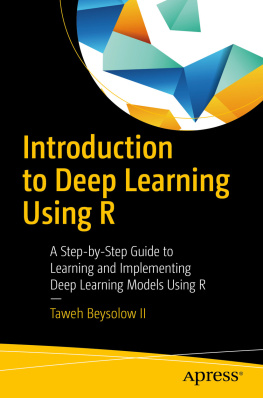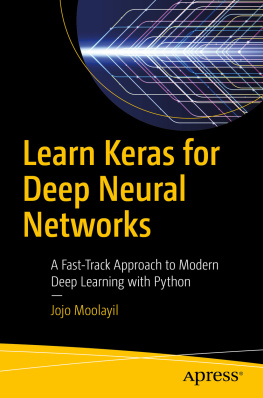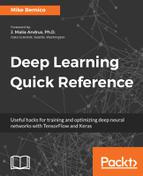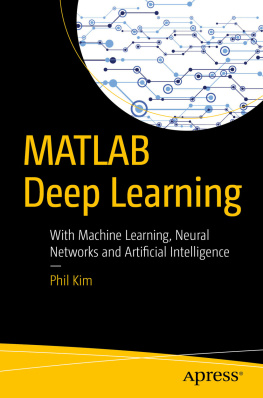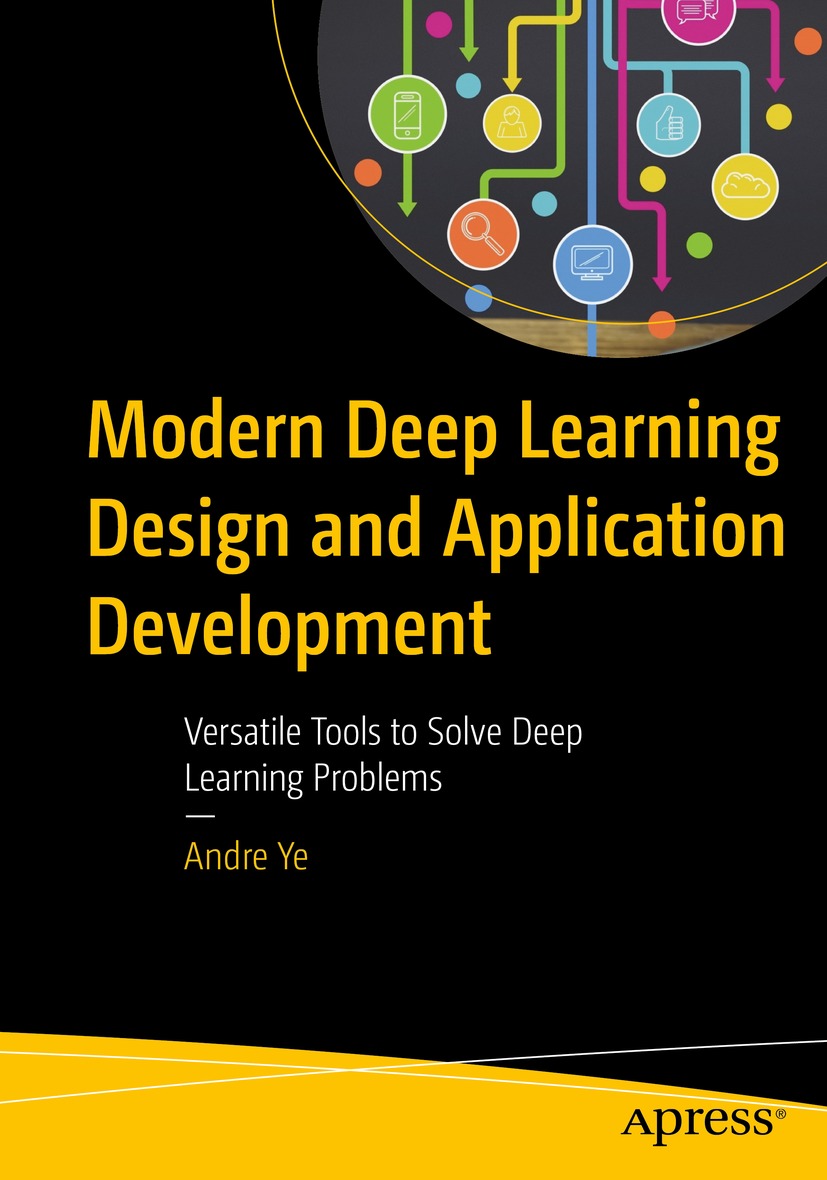Andre Ye - Modern Deep Learning Design and Application Development: Versatile Tools to Solve Deep Learning Problems
Here you can read online Andre Ye - Modern Deep Learning Design and Application Development: Versatile Tools to Solve Deep Learning Problems full text of the book (entire story) in english for free. Download pdf and epub, get meaning, cover and reviews about this ebook. year: 2021, publisher: Apress, genre: Children. Description of the work, (preface) as well as reviews are available. Best literature library LitArk.com created for fans of good reading and offers a wide selection of genres:
Romance novel
Science fiction
Adventure
Detective
Science
History
Home and family
Prose
Art
Politics
Computer
Non-fiction
Religion
Business
Children
Humor
Choose a favorite category and find really read worthwhile books. Enjoy immersion in the world of imagination, feel the emotions of the characters or learn something new for yourself, make an fascinating discovery.
Modern Deep Learning Design and Application Development: Versatile Tools to Solve Deep Learning Problems: summary, description and annotation
We offer to read an annotation, description, summary or preface (depends on what the author of the book "Modern Deep Learning Design and Application Development: Versatile Tools to Solve Deep Learning Problems" wrote himself). If you haven't found the necessary information about the book — write in the comments, we will try to find it.
Learn how to harness modern deep-learning methods in many contexts. Packed with intuitive theory, practical implementation methods, and deep-learning case studies, this book reveals how to acquire the tools you need to design and implement like a deep-learning architect. It covers tools deep learning engineers can use in a wide range of fields, from biology to computer vision to business. With nine in-depth case studies, this book will ground you in creative, real-world deep learning thinking.
Youll begin with a structured guide to using Keras, with helpful tips and best practices for making the most of the framework. Next, youll learn how to train models effectively with transfer learning and self-supervised pre-training. You will then learn how to use a variety of model compressions for practical usage. Lastly, you will learn how to design successful neural network architectures and creatively reframe difficult problems into solvable ones. Youll learn not only to understand and apply methods successfully but to think critically about it.Modern Deep Learning Design and Methods is ideal for readers looking to utilize modern, flexible, and creative deep-learning design and methods. Get ready to design and implement innovative deep-learning solutions to todays difficult problems.
What Youll Learn
- Improve the performance of deep learning models by using pre-trained models, extracting rich features, and automating optimization.
- Compress deep learning models while maintaining performance.
- Reframe a wide variety of difficult problems and design effective deep learning solutions to solve them.
- Use the Keras framework, with some help from libraries like HyperOpt, TensorFlow, and PyTorch, to implement a wide variety of deep learning approaches.
Who This Book Is For
Data scientists with some familiarity with deep learning to deep learning engineers seeking structured inspiration and direction on their next project. Developers interested in harnessing modern deep learning methods to solve a variety of difficult problems.
Andre Ye: author's other books
Who wrote Modern Deep Learning Design and Application Development: Versatile Tools to Solve Deep Learning Problems? Find out the surname, the name of the author of the book and a list of all author's works by series.

